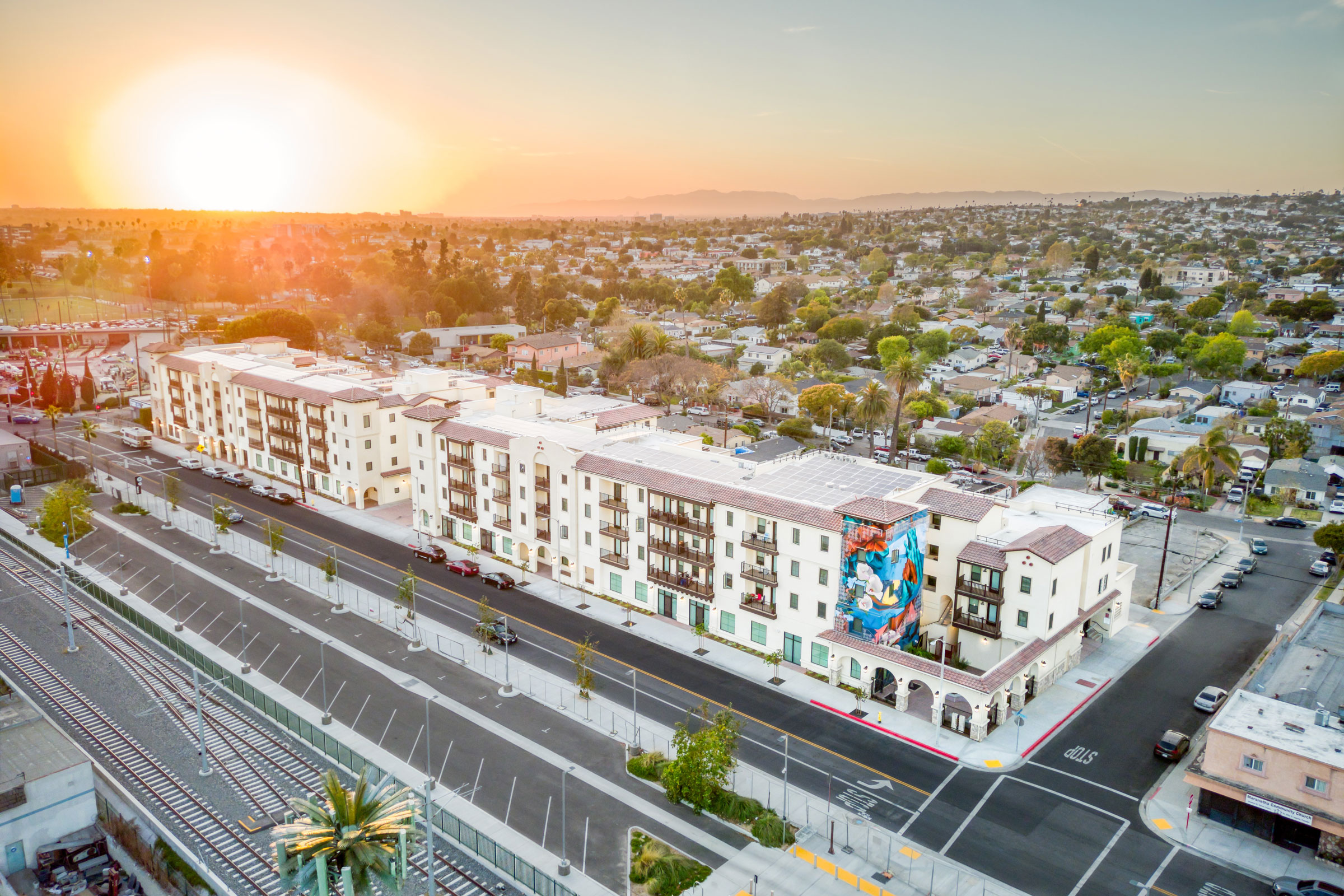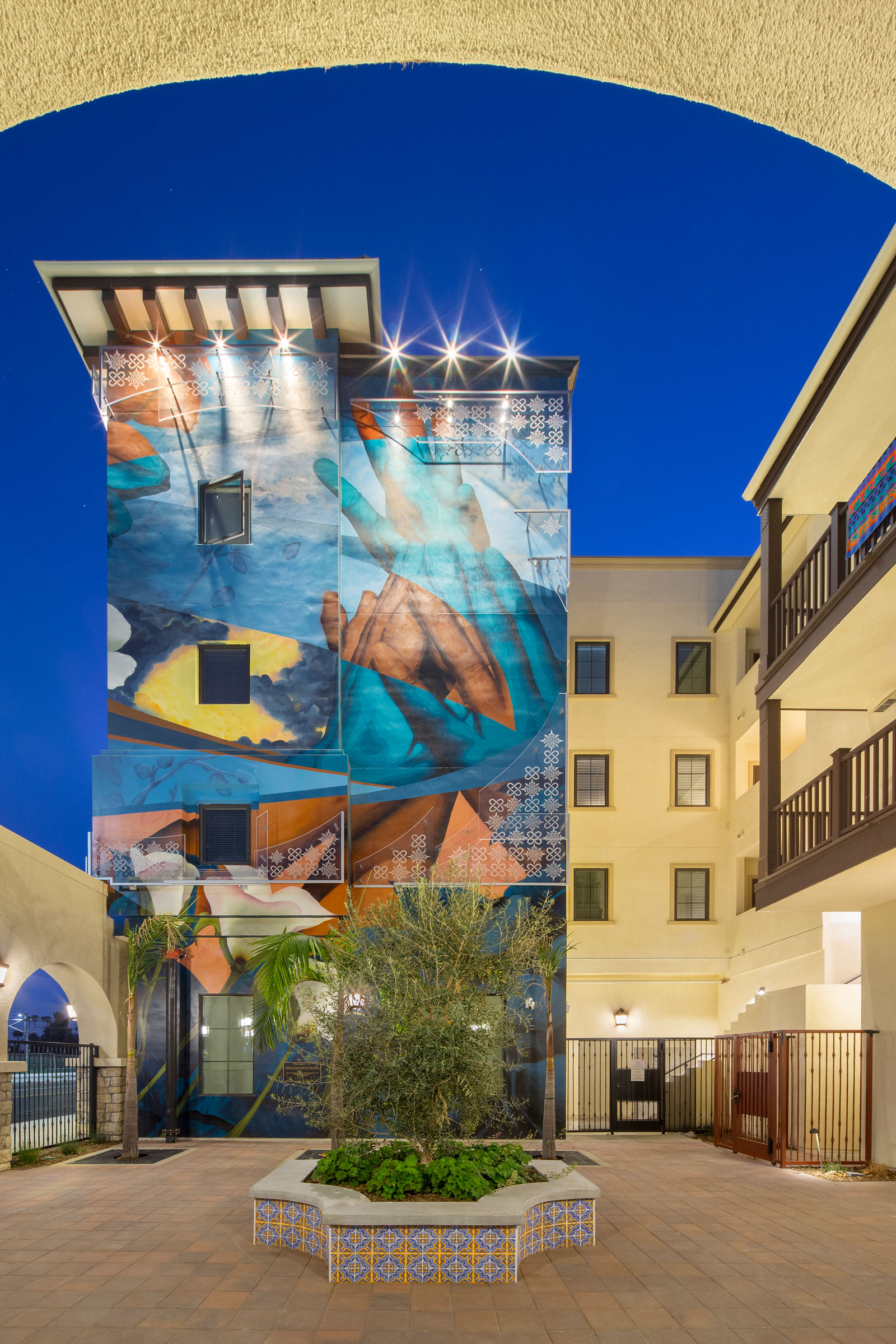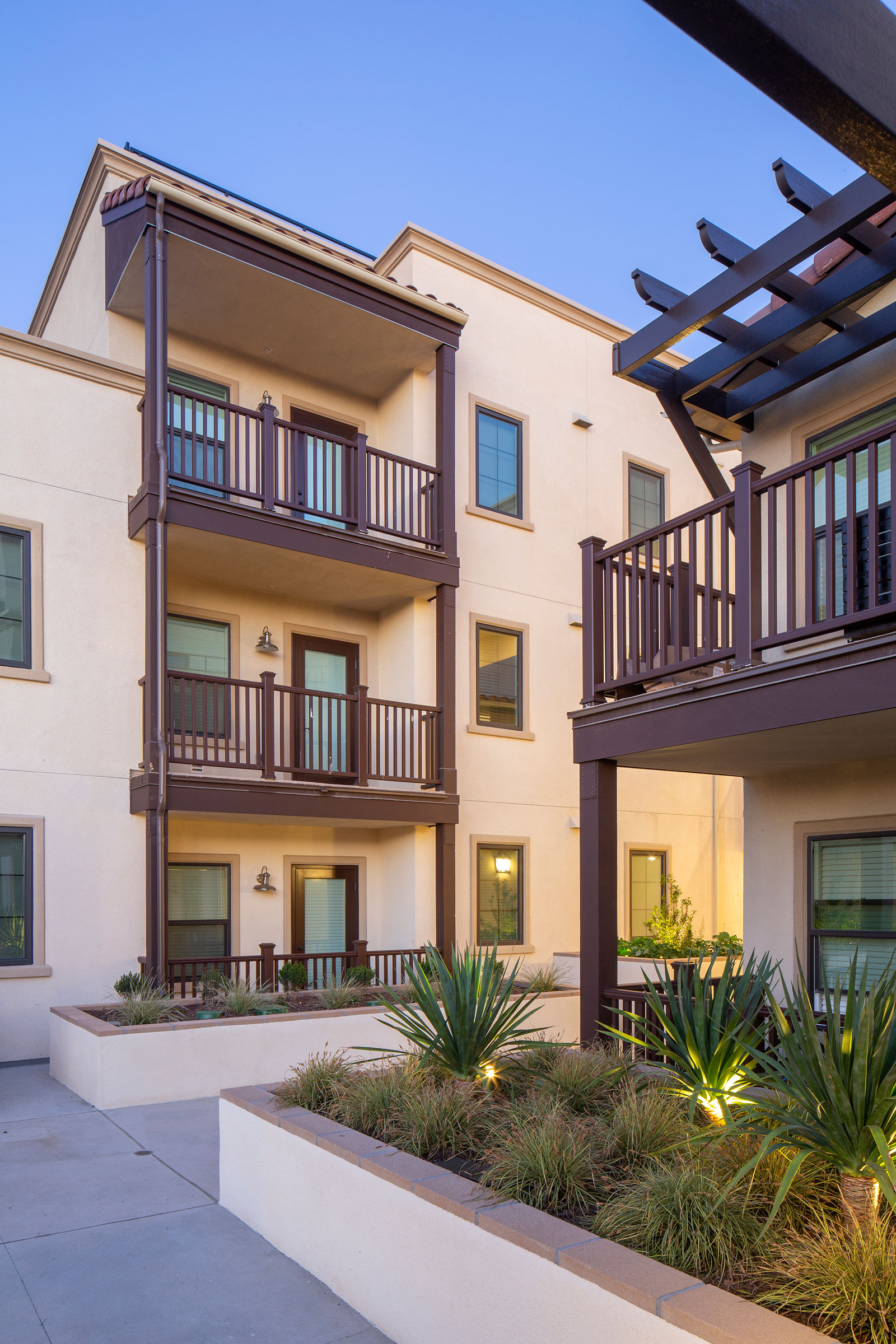Story at a glance:
- KFA designed a 154,235-square-foot affordable housing project in Inglewood, California, called Fairview Heights.
- The project is a collaborative effort between local governments and agencies, non-profit housing developers, private companies, and community organizations.
- Through transit-oriented design, onsite electricity generation, energy-efficient mechanical systems, and water-wise landscaping, Fairview Heights will achieve LEED for Homes and Multifamily Gold.
The affordable housing crisis can be felt everywhere, particularly in Southern California, and nowhere else is the old adage that “it takes a village” more true than here.
Planning and executing successful affordable housing projects takes a strong cooperative effort on the part of local governments and agencies, nonprofit housing developers, private companies, and community organizations. This is especially true for Fairview Heights, which was the result of a partnership between Linc Housing and National Community Renaissance (National CORE), working together with Los Angeles County, LA Metro, the City of Inglewood, and Bank of America, along with numerous other organizations and community groups over five years. When Linc Housing partnered with KFA to design Fairview Heights, the goal was to design an affordable housing project that would stand as a beacon of hope and change in this vibrant community.
As leaders in diverse, forward-thinking architecture and a firm dedicated to working toward solutions for the affordable housing crisis, having designed and built more than 6,000 units of affordable housing since 1988, KFA’s design team was tasked with creating a transit-oriented mixed-use community with residential and retail space that would engage with the surrounding neighborhood and streetscape, connecting the train station with nearby Edwards Vincent Jr. Park.
After over a year of in-depth exploration, community meetings, and discussions with stakeholders led by LA Metro, KFA worked collaboratively with the development team to bring their vision to life, designing a project that would provide 101 units of affordable housing, ground floor retail space, a community police center, youth and adult educational spaces and other amenities that would serve future residents and the community. Fairview Heights is a contextual, aesthetically contemporary design that blends artfully with the surrounding urban fabric.
Site
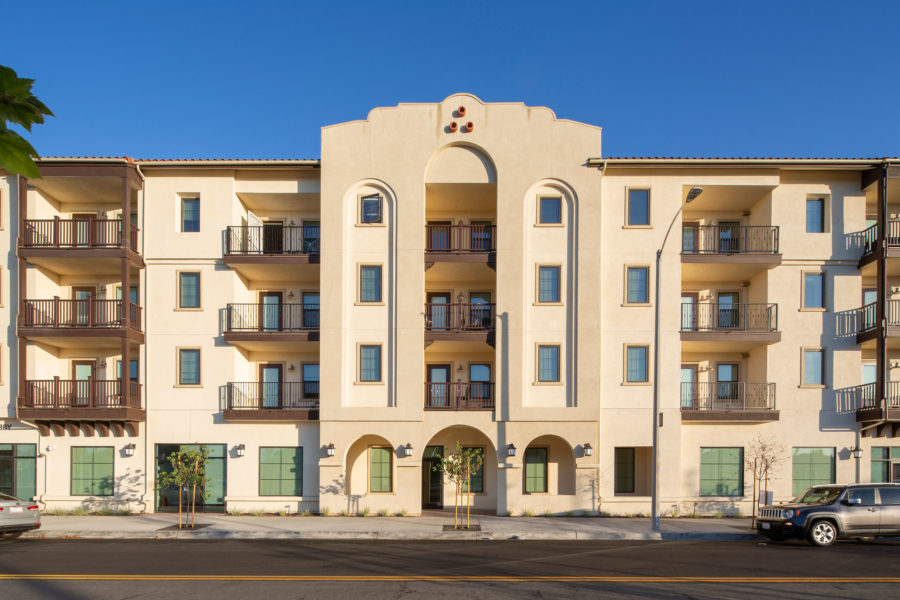
Traditional Spanish Mission design elements balance the scale of the project with the residential vernacular, and a neutral color scheme complements traditional accents like clay tile roofs, dark wood, and wrought iron railings. Photo by Jim Simmons Photography
At the intersection of Long Avenue and Redondo Boulevard, Fairview Heights is built on what was formerly the site of an obsolete building owned by the County of Los Angeles. As LA Metro was developing plans to build a new stop across the street as part of the Crenshaw/LAX Metro Transit Corridor, the County identified the 1.4-acre site for potential future transit-oriented development as part of its strategic plan to enrich the lives of its community members.
Neighborhood & Design
- Photo by Jim Simmons Photography
- Photo by Jim Simmons Photography
Fairview Heights is in a charismatic residential neighborhood filled with early 20th century houses. An attractive and sought-after neighborhood for decades, the neighborhood is home to a burgeoning arts scene and enjoys a special connection to Edward Vincent Jr. Park—a mature 55-acre park popular for community events, sports, and performing arts that is one block from the project. The park is anticipated to play a greater role as Redondo Boulevard develops into a “primary pedestrian promenade,” part of the City of Inglewood’s revitalization efforts and future development plans near the new train line.
Since the site was located directly across from the Fairview Heights Station, KFA imagined the project would serve as a landmark, providing a sense of arrival and place, similar to the role played by old train stations. At the southeast corner of the site, a public plaza was incorporated to act as a Metro landing center. This plaza anchors the entire project with a four-story tower featuring a locally commissioned augmented reality mural. The striking mural by local artists Yanoe and Zoueh, aptly called “Rise Above,” is a visual expression of what this project represents for its residents and the community at large. The imagery features flowers local to Inglewood, while the joined hands are symbolic of home, unity, and security. By integrating technology and a mix of mediums, visitors can interact with the mural on their smartphones, which brings the art to life, and features a video compilation of interviews with community members.
The 154,235-square-foot project spans an entire 600-foot-long city block. At this scale the project serves as a transition between the very public transit corridor to the south and the residential neighborhood of Fairview Heights just to the north. The taller four-story side of the project is positioned toward Redondo Boulevard and steps down to two stories facing the residential neighborhood. Traditional Spanish Mission design elements were employed to balance the scale of the project with the residential vernacular, and a neutral color scheme complements traditional accents like clay tile roofs, dark wood, and wrought iron railings, offsetting the scale of the project with traditional warm materials.
The Redondo frontage includes 6,300-square-foot of retail space, offices, community rooms, a computer lab, and an Inglewood Police Department community drop-in center. Two large, landscaped courtyards face the green residential areas at the second floor and are equipped with barbecue areas, play areas and gardens, offering residents ample outdoor space and communal areas. Both vehicular parking and bicycle parking are provided for residents and retail customers behind the ground floor spaces and below grade.
Residential units are one-, two-, and three-bedroom apartments, with 50 units reserved as permanent supportive housing for people who have experienced homelessness. Linc Housing and National CORE partnered with the Los Angeles County Department of Health Services, and LACDA to complete the project, with Linc Housing providing on-site services for all residents.
Sustainability
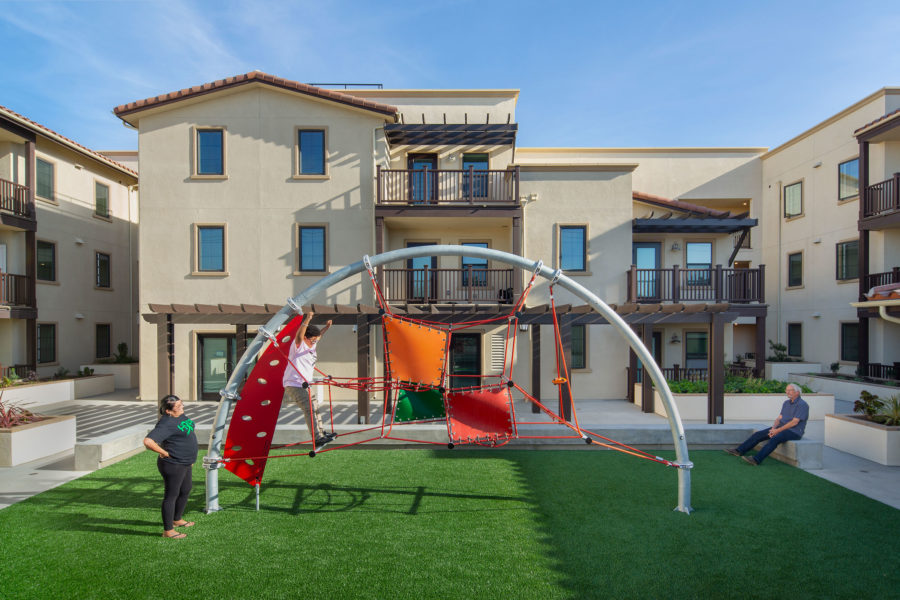
Tot-lot with play structure for children. Photo by Jim Simmons Photography
Multifamily residential projects face many challenges when it comes to high-performance design. Often the sheer scale of energy use, water heating demands, and heating and cooling needs of this project typology makes it difficult and expensive to find efficiencies. However, nearly all affordable housing projects that receive public funding are encouraged, if not required, to incorporate sustainability measures.
One of the most impressive features of Fairview Heights is the extensive solar panel array on its roof. From the early stages of design KFA anticipated the need to keep as much of the roof area as free as possible. In multifamily buildings this can be a challenge, as roof space is typically occupied by the large quantity of mechanical condensers that serve each dwelling unit. However, by prioritizing the roof space for solar, we made sure all other systems and design features would support that commitment. In lieu of standard mechanical condensers, KFA opted for wall-mounted heat pumps that could be installed on the parapet walls around the perimeter of the roof.
In addition to keeping the roof area clear, they also had the added benefit of being more energy-efficient than their standard counterparts. The robust photovoltaic system was designed to generate enough onsite electricity to support the nearly 14,000 square feet of common space, which includes a large community room with a teaching kitchen, a computer lab, case management and resident service offices, and conference rooms.
The landscape design and plant selections were also made with sustainability in mind. As part of the county requirements, a minimum of 75% of the plant selections that were made are drought-tolerant. Each of the second-floor courtyards features raised planters with vegetable gardens and outdoor barbecues with an overhead trellis, and a tot-lot with play structure for children. These amenities allow the courtyards to foster a sense of community and interaction for residents of all age levels.
Through transit-oriented design, onsite electricity generation, energy-efficient mechanical systems and water-wise landscaping, Fairview Heights will achieve LEED for Homes and Multifamily Gold.
The Future
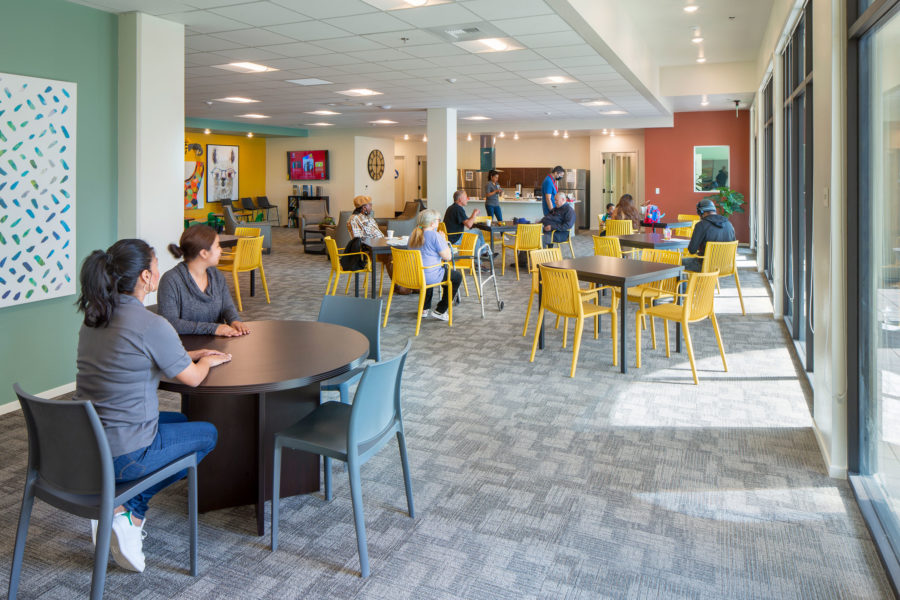
Inside Fairview Heights in Inglewood. Photo by Jim Simmons Photography
Fairview Heights is truly the result of a strong and effective collaborative effort on behalf of the proverbial village. KFA interpreted the goals of the development team, the County, the City of Inglewood—a city that is looking toward the future -, and the neighborhood at-large, to give the community a project that not only provides essential housing but integrates key sustainability measures to make the project resilient for the changing climate and the future.
Project Credits
Project: Fairview Heights
Location: Inglewood, CA
Completion: 2022
Size: 154,235 square feet
Architect: KFA
Landscape Architect: Yael Lir Landscape Architects
Structural Engineer: Ming Yang Yeh & Associates
MEP Engineer: Metrics Mechanical Engineering
Electrical Engineer: Gray Electrical Consulting + Engineering, Corp
Civil Engineer: DK Engineer, Corp.
Contractor: National Community Renaissance
Mané Ristakian, job captain at KFA Architecture, contributed to this article.

